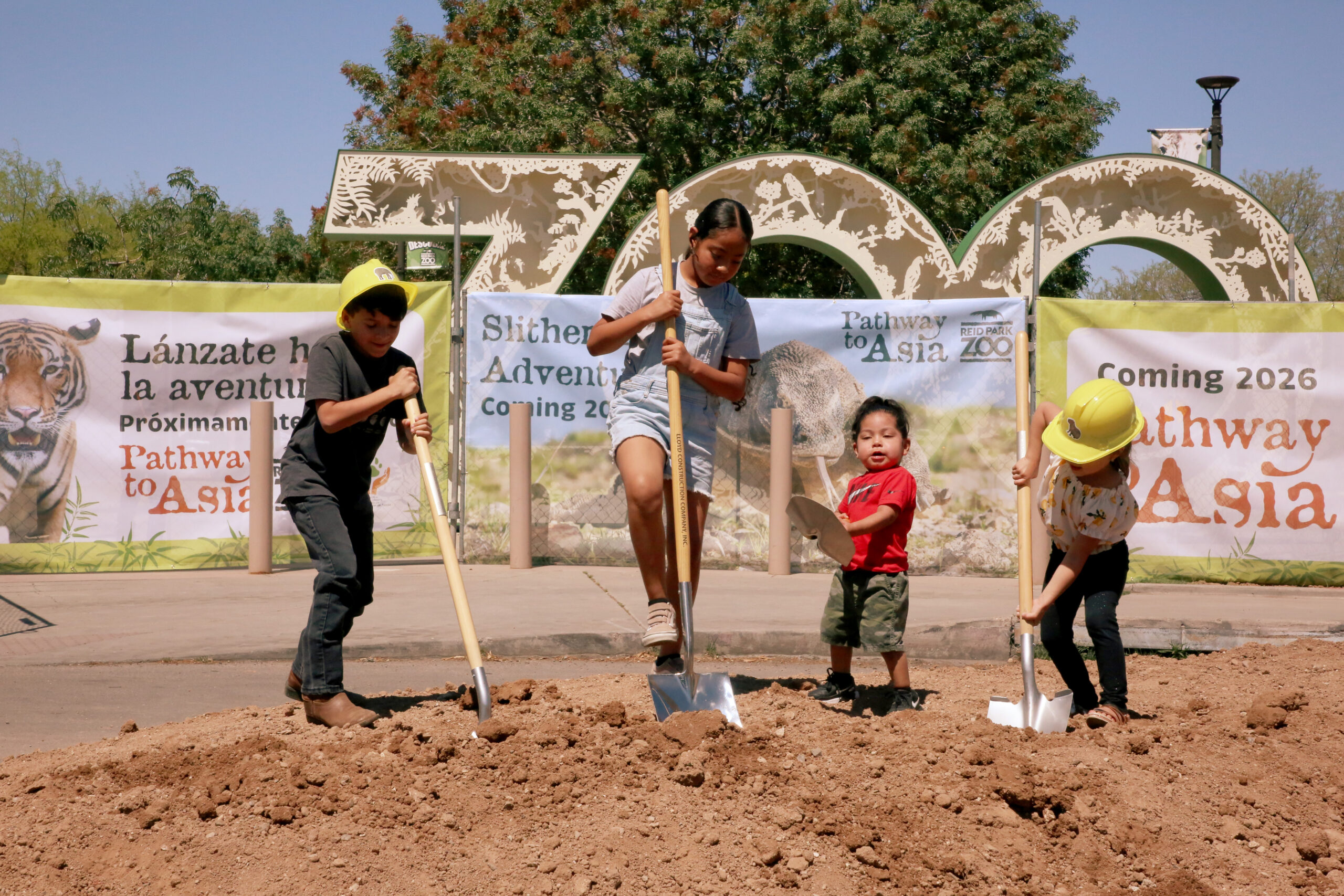Summary of Reid Park Zoo Begins Construction on Pathway to Asia:
Reid Park Zoo in Tucson has initiated the construction of its anticipated Pathway to Asia exhibit, which is planned to open in 2026. This new exhibit offers visitors an immersive experience of Asia’s diverse wildlife and habitats, featuring species such as red pandas, Komodo dragons, sand cats, and Malayan tigers. The Pathway to Asia will include detailed habitats tailored to each species, interactive elements for guests, and educational opportunities about wildlife conservation. Designed to resemble ancient Cambodian architecture, the project will expand the zoo by 4.5 acres, funded by a voter-approved sales tax and private donations. The exhibit is a key phase in the Zoo’s 10-year Master Plan, enhancing its role in conservation and education.
– Reid Park Zoo breaks ground on the Pathway to Asia, a major expansion connecting guests with wildlife from Asia.
– The project will feature state-of-the-art habitats for Malayan tigers, red pandas, Komodo dragons, and other iconic Asian wildlife, emphasizing animal welfare and conservation.
– Innovative design elements will include interactive experiences for guests, such as the Wings of Wonder aviary and the Tiger Research Station, to foster education and engagement in wildlife conservation.
The expansion is part of Reid Park Zoo’s 10-year Master Plan, funded by a sales tax and private donations. It indicates community support for conservation and education projects.
– Pathway to Asia aims to be transformative, positioning Reid Park Zoo as a national leader in conservation and promoting global biodiversity.
Tucson’s Reid Park Zoo has officially commenced construction on the Pathway to Asia exhibit, marking a significant milestone in zoo development and wildlife conservation. This ambitious project, slated for completion in 2026, promises to bring a slice of Asia’s diverse ecosystems to Arizona, offering zoo visitors immersive experiences while addressing crucial wildlife protection efforts.
The design of the Pathway to Asia focuses on encapsulating the rich biodiversity of the Asian continent, which is the largest and most populous in the world. It aims to provide a deep dive into the natural habitats of some of Asia’s most fascinating species, such as red pandas, Komodo dragons, sand cats, and Malayan tigers. This aspect is crucial as the Malayan tiger is critically endangered, making conservation efforts more important than ever. The zoo plans to establish a breeding and conservation center specifically for these majestic big cats, which aims to contribute to their global population and raise awareness about the threats they face in the wild.
Habitat design is a complex science that requires careful consideration of numerous factors to create environments that allow animals to thrive. In the Pathway to Asia, each habitat is crafted to meet the specific needs of its inhabitants, promoting natural behaviors and allowing for environmental control by the animals themselves. For instance, red pandas will benefit from an indoor-outdoor space tailored to their climatic needs. At the same time, Malayan tigers will have access to pools and climbing structures, mirroring the complexity of their natural habitats. This approach demonstrates a shift in zoo management practices, emphasizing animal welfare and behavioral enrichment in captive environments.
Interactive experiences are central to the Pathway to Asia, designed to engage visitors and foster a connection between humans and wildlife. For example, the Wings of Wonder aviary will allow guests to interact closely with birds, feeding and observing them in a controlled but naturalistic setting. Similarly, the Tiger Research Station offers an educational glimpse into tiger conservation, bridging the gap between in-situ (in the wild) and ex-situ (in captivity) conservation efforts. These experiences are key to inspiring conservation action among zoo visitors by providing them with a direct role in wildlife preservation initiatives.
The expansion’s funding comes from a combination of a voter-approved sales tax and private donations, highlighting the strong community support for the zoo and its conservation mission. It also represents the first phase of a larger 10-year Master Plan to enhance the zoo’s infrastructure and interactive opportunities, ensuring its role as an education leader and conservation advocate well into the future.
The Pathway to Asia is a game-changer for Reid Park Zoo, with potential impacts far beyond its gates. By creating immersive, educational experiences that spotlight the plight of endangered species, the zoo aims to galvanize public support for wildlife conservation on a global scale. This project underscores the importance of zoos in the 21st century as not just attractions but as pivotal centers for conservation and environmental education.
As Reid Park Zoo embarks on this transformative journey with the Pathway to Asia, it sets a new standard for how modern zoos operate and contribute to global conservation efforts. This endeavor reflects a broader movement within the zoo community to prioritize animals’ physical and psychological well-being, engage the public in meaningful conservation work, and support species preservation in the wild. The Pathway to Asia is not just an expansion; it’s a commitment to the future of wildlife conservation, education, and the promotion of biodiversity.


